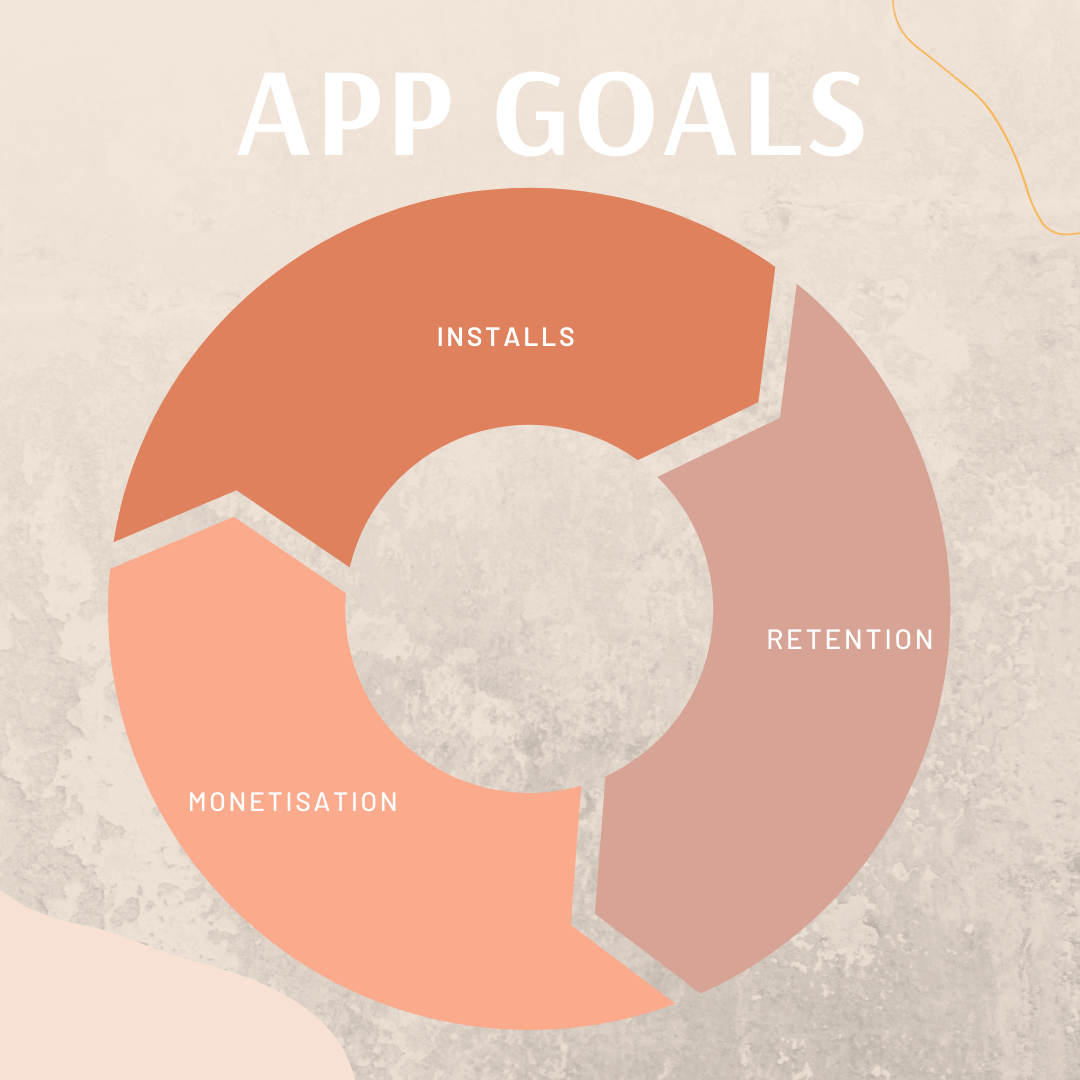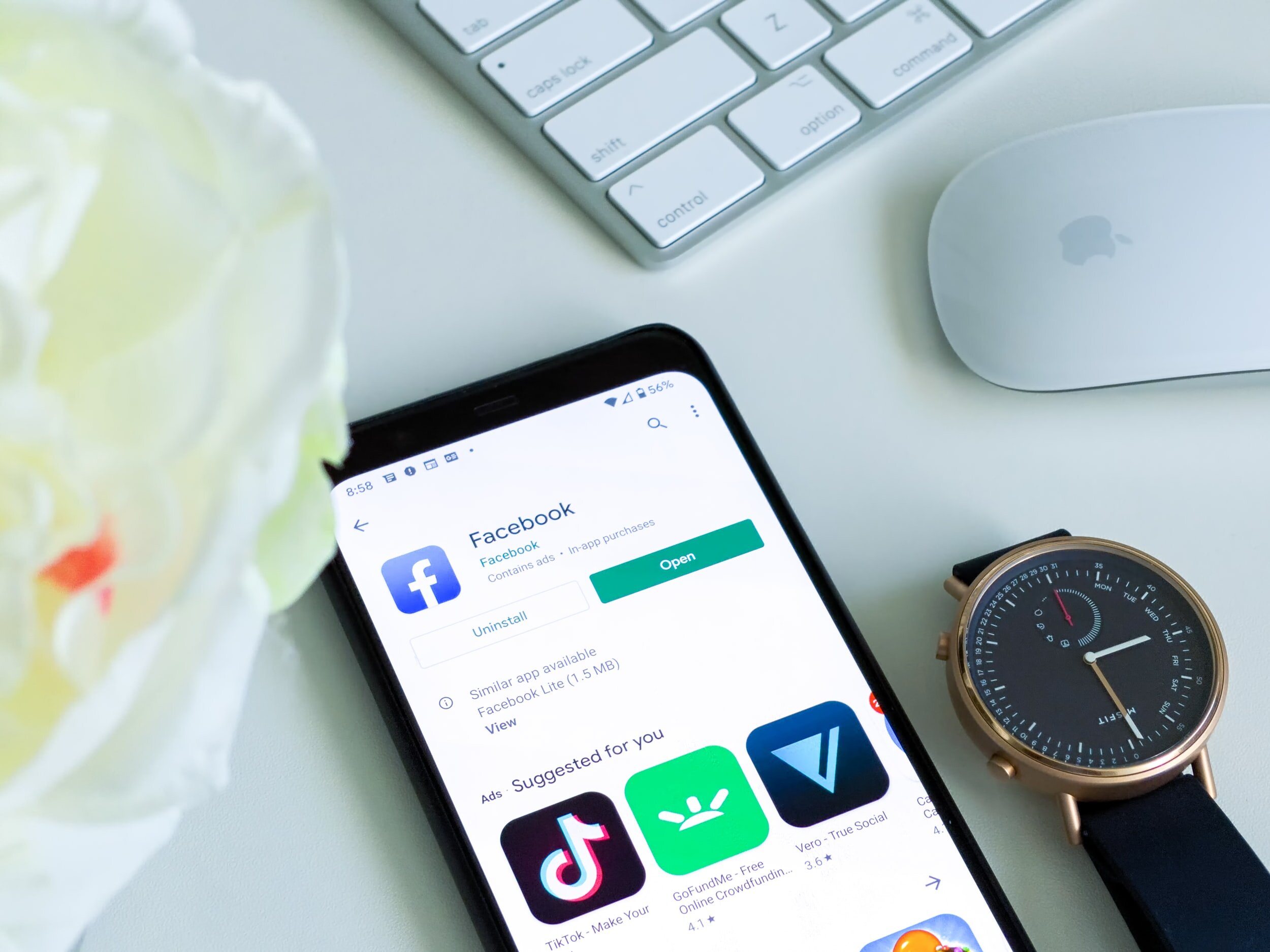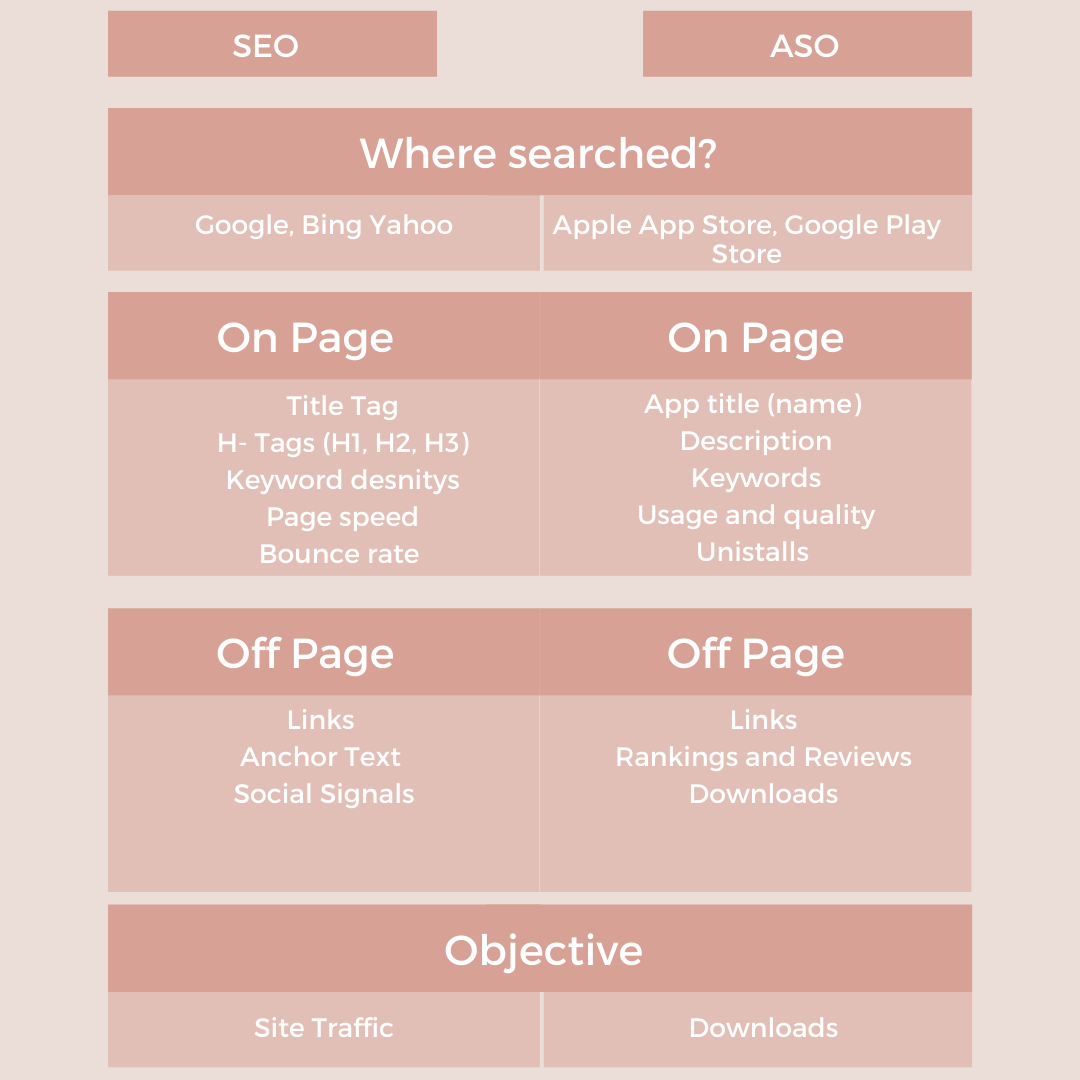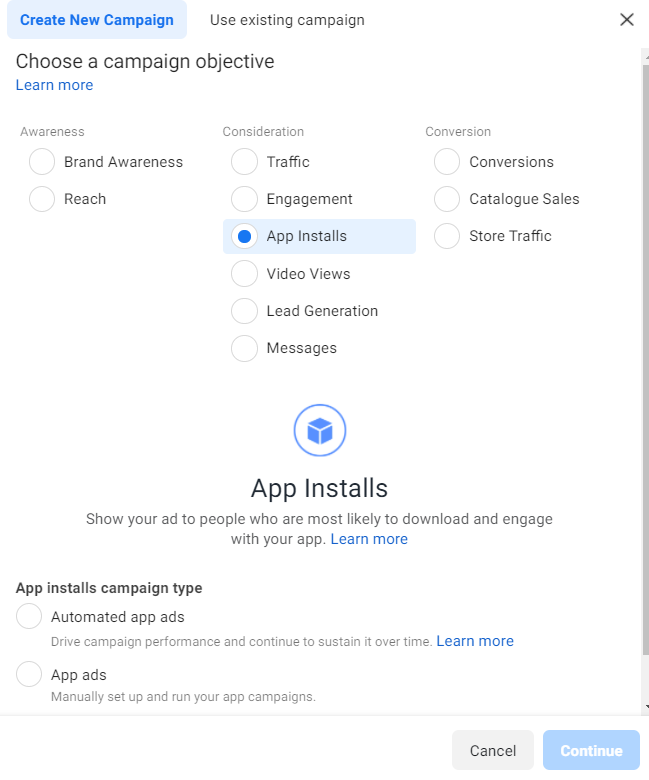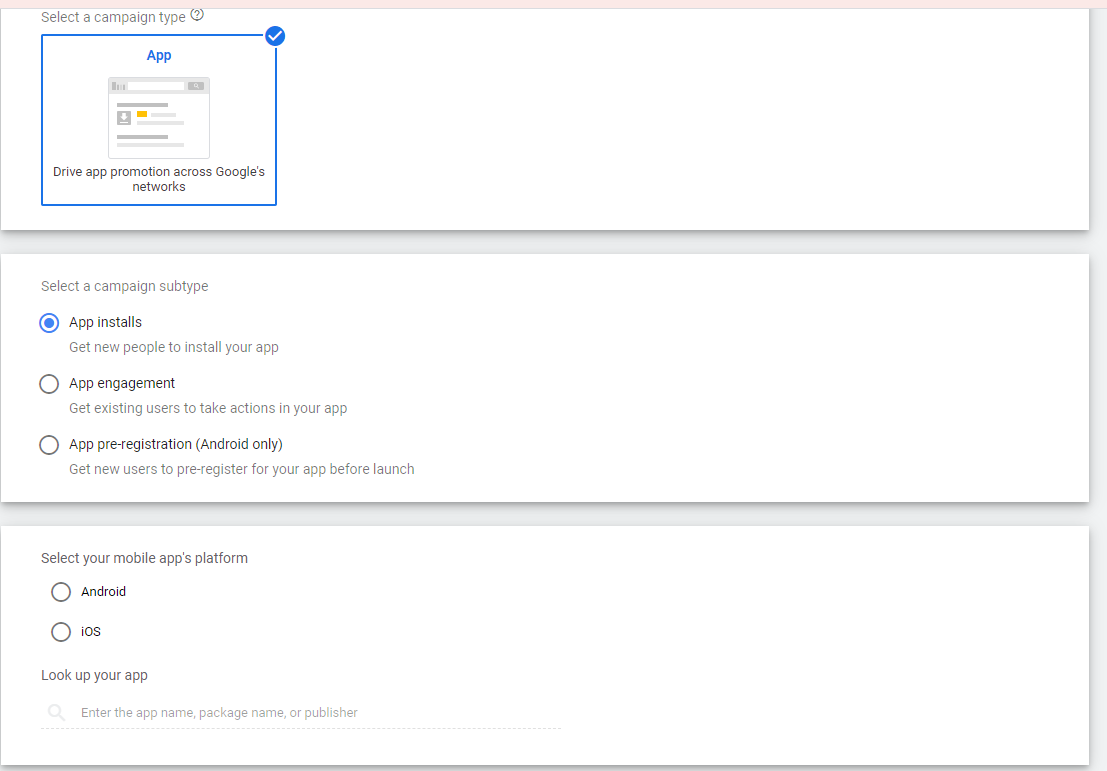Ultimate Guide to Mobile App Marketing
You’ve taken the plunge and created an app that you believe will get people excited. Whether it’s a mobile gaming app, a lifestyle app or anything else you can imagine once your app is ready to be introduced to the world, how do you go about making sure it gets noticed.
Mobile app marketing can be a world away from marketing a physical product or service, and getting people to install and interact with your app is really just the first step to mobile app domination.
So how can market your app successfully? Our ultimate guide digs deep into how to use a range of strategies to make sure that, whatever your app idea, you ensure that it is successful.
Setting goals for your app - installs, user retention, monetisation
Any marketing plan rests on its objectives. The clearer you are in knowing what you want to achieve the better you can forecast profits, measure results and tackle potential problems.
Mobile apps can serve a variety of purposes, they can be a money generator within themselves or a way of helping new and existing customers easily access your services elsewhere such as online or in-store.
Just like websites, mobile apps can serve a huge range of functions, so what’s right for you will depend on the purpose of your app, and how it drives your business.
We will talk about how to monetize your app further along in this guide, but being clear about what you want your app to do for you must be the first stage before starting any app marketing strategy.
Generally speaking, there will be three areas to focus on when creating your app marketing objectives namely:
App Installs
Of course, getting people to install your app in the first place is the key to the next two marketing phases. The more people who are your ideal customers who install your app, the more likely your app will be successful.
Consider setting targets for the number of installs you need to make your business profitable.
User Retention
Getting someone to install your app is all good and well, but ensuring that they use and keep the app installed is what will matter in the longer term. Of course, in some circumstances where the app is designed to be used for a single purpose, retention may be less important.
Consider the difference between Rightmove and Uber. We buy a house maybe a few times in a lifetime, whereas for many jumping in an Uber is a weekly occurrence. Therefore their retention goals will be very different.
Monetisation
All the users in the world won’t make a difference if you don’t have a clear idea of how you will make money from your mobile application. While your monetisation goals will likely have been set before the build, ensure that you create clear KPI’s on what will look like success to you.
Understanding your audience
Before you start with any type of marketing campaign, it’s vital that you understand who your app appeals to and dig deep into who they are and why they will want to use your app.
We recommend that you consider using Buyer Personas to help to understand who your users are likely to be, what will make them keep coming back to your app, and segment your users by intent.
Find out more about creating buyer personas.
How to get mobile app installs
Getting people to actually install your app is the first step on your journey to app success. This phase is all about user acquisition, so is not yet necessarily focused on monetisation.
Use your audience personas and consider the type of app you have to choose which mobile app marketing strategy will work best for your business.
We discuss some of the best ways to gain installs from mobile app users below
Marketing Your App in the App Store or Google Play
There’s a lot of competition within the stores themselves. Apple’s Apples app stores has around 1.96 million apps available for download, and the Google Play store has a whopping 2.87 million apps available for download.
So making sure that your listing stands out to your ideal customers is key to success.
Optimise Your App Listing For Increased Visibility - App Store Optimization
When users are looking for new apps to download they search within the app store itself so you need to optimise your listing to ensure your app appears at the top of the results. This is known as ASO (app store optimisation) and works in a similar way to website SEO. If you’re familiar with website SEO, here’s a handy guide to the main differences between search engine optimisation and app store optimisation.
To do this, you need keywords strategically placed through the app listing’s various sections, and make sure your primary keywords are included in the listing’s title. Don’t compromise succinctness for keywords though – you need to get the balance right.
The App store and Google Play each use slightly different ranking factors to determine how your app will show and draw information from different areas.
Google play using the description as one of the main areas to take keywords to rank your app for. However for Apple, keywords are not taken from the app description, but it’s still important to make sure that this is written in a way that’s appealing to users.
Choose A Memorable Icon for your app
You need to choose an icon for your app that is memorable, enticing and distinct. After all, it’ll give users the first impression of what you have to offer when they look for your app in the store. Make sure your icon stands out using contrasting, vibrant colours and a distinctive design.
It can be worth testing several app icons to see which most users respond to in the store, and don’t be afraid to change your icon if it’s not performing as you would like. Even big brands tend to go through several app icon iterations.
Use great visuals
Be sure to use great visuals to show off what your app can do, and what it looks like. Upload videos, screenshots and images that really give someone searching a feel for what they will get.
It’s worth noting that a good listing can help you to get featured on things like App of the day.
Keep Ratings High
Reviews and ratings are used as a key ranking factor so you need to keep yours at 4.5 or above. It’s worth noting that 80% of mobile app users read at least one review before choosing to download an app, so it’s essential that you reply to reviews and take feedback on board for future updates.
Encourage your users to leave positive reviews, manage any negative reviews effectively and keep your channels of communication open to user feedback.
Content marketing for a mobile app
Consider generating content elsewhere that is going to be helpful for your app users. Depending on your app this could be as simple as having a single landing page that explains what the app is about, to an all singing all dancing website that supports your app marketing.
Consider what type of content will best support your app. For example, if you were creating an app that helps users to create good habits, consider blog posts that help to support them. Or if you have a gaming app, it can be a good idea to create content that helps users understand how to play.
A further benefit of having an online presence is that you are able to get SEO value out of what is available online, meaning that search engines can pick up on what you offer.
Advertising a mobile app using Facebook ads
Paid ads on social media can be a fantastic way to spread the word about your app. The Facebook ads manager, which also incorporates Instagram allows you to directly create campaigns with the objective of getting app installs and direct call to action to install your app.
Before setting up your ad campaigns, you will need to register your mobile app for Facebook mobile ad apps. Once this is done, you will need to set up your SDK (software developers kit). This enables you to pass app event data (such as installs, day 2 retention, in app purchases) back to Facebook. And you’ll need this to properly implement your Facebook app marketing campaigns properly.
Info on how to do this can be found directly here
Once this is set up, you can start to put together your mobile app Facebook ads. Facebook provides you with a range of options when it comes to audience targeting, types of ad, and also the placement where your ad will show.
When starting out, you are unlikely to already have a lot of data, so use your buyer personas to create interest based audiences. These are audiences who are likely to want to use your app. So think - what other apps might they use, what topics are they interested in? What locations are they likely to be in?
Once you have valuable data running through your app, you can get a little more clever. You can use that information to start creating “lookalike audiences”- audiences who are “like” your existing users.
Want to learn more about Facebook ads for app installs? Why not book our Facebook ads training? You’ll get a one to one tailored training session with an app advertising expert.
Advertising a mobile app using Google Ads
Google is also a great platform to promote your app. Google app install ads can show in several places across the web including on Google Play, across the display network (for example on a gaming site), and on YouTube.
App install ads on Google are fairly easy to set up, but do lack the options and control of Facebook ads. You simply upload “assets” which could be images, video or HTML 5 assets alongside your text and logo and let Google do the heavy lifting in terms of content creation.
Just like Facebook, as you start to drive data you can optimise your Google ads for specific actions which you want people to take. So starting out, this may simply be app installs, but as you continue to drive data through the app, you may start to focus on driving in app actions instead, such as in app purchases, or retention.
Want to know more about Google ads? Why not try our Google ads training?
Influencer marketing for an app
Depending on your audience and what your app does, it could be worth considering whether getting an influencer on board will help to grow your business.
When choosing an influencer, first make sure that they are someone who resonates with your target audience. Consider what platforms your audience use and look at how they perform on that specific channel. For example, if you have a gaming app you might want to look at those who are big on Twitch rather than Twitter.
Then look at how much engagement the influencer gets. Follower numbers aren’t everything, so look closely at engagement metrics. How many people interact with their posts or videos? Do they have a good reputation?
Be mindful that you need to be clear on what you want your influencers to do, and how you plan to reward them. Apps are a little different from physical products, in that it’s not just a case of gifting a handbag. So consider planning a careful strategy on what you want them to do, and have clear expectations.
Mobile App retention
Once you have a strategy in place for your installs and have users flowing through your apps it’s time to look at how many people are staying.
The truth is, we all have limited space on our phones, in terms of both data and also looking cluttered, so it’s not unusual for a user to choose to delete an app if they are not using it.
While retention rates vary hugely across types of app, research undertaken in 2021 showed for example that casual gaming apps need to get maximum revenue per user in the first two days as retention rates slip heavily after this period.
What retention rates you need will depend on what your app is intended to do, and how you generate money from it, but it's worth bearing in mind that, across ALL app verticals an average of over 80% of users will drop off 90 days after installing an app.
Mobile App Onboarding process
One of the biggest bugbears for users of any app is when it’s overly complicated or they don’t know how it works, so quickly uninstall.
When users sign up for your app, make sure that there is a very clear onboarding process that allows them to understand the benefits of the app, what’s included in their version, and how to use it.
Consider combining in-app instructions with emails or push notifications that help users to get the most out of the app. Be clear in your app messaging in the store and within the app itself so that users understand exactly what they are meant to do.
If your app includes a subscription or upgrade, make sure that there is enough free content to make the app usable first. It’s all well and good to put improvements behind a subscription but if users cannot see the benefit of the free version first, they are unlikely to want to upgrade, and this can seriously impact on reviews as well.
Using email to retain app users
Remember while you to your app is EVERYTHING, for your users it’s likely one of hundreds on their phones, so it’s easy to install and forget. So utilise email to get those who have installed back on the app.
You can update on new features, or updates that solve problems. Or give tips or run competitions. Using email to contact your user base allows you to increase retention, whether it’s day one or day 30.
Use push notification to increase app retention
Sending push notifications from your app allows you to “speak” to those who’ve installed it directly on their devices, and can be great for long term retention.
Push notifications should add value to your audience, so just saying “don’t forget our app” isn’t enough. Use push notifications to provide important messages, reminders and tips.
And be judicious about how many notifications users receive, as they are more likely to opt out of them (or even uninstall) if there are too many.
(If you’ve ever used Clubhouse - you’ll know what we mean)!
Incentivise app users
If you really want people to use your app as opposed to another method of communication such as your website, consider whether you can incentivise app users. Either by offering them specific discounts or benefits.
Using social media to boost mobile app retention
Accompanying your app with an organic or paid social media strategy can help to really boost your retention rates.
Depending on the type of app you have and your target audience, you can consider adding things like private Facebook groups as part of your marketing strategy.
Groups particularly can foster a sense of community that keeps users logging on and wanting more. For example if you have a productivity app, consider adding a group or page that provides users more tips outside of what the app can offer.
How to make money from your mobile app
While for many businesses, a mobile app may simply be a way to increase sales via other means, for many of those who develop a mobile app, they do it with the objective of making money from the app itself.
There are several ways in which you can monetise your app, and in many cases, it may be that you have several income streams such as advertising and in-app purchases, so it’s never “one size fits all”.
However, we discuss some of the ways in which you can make money from your app.
Free vs Paid apps
Before putting your app live it’s worth considering whether your app should be free to download or whether you expect a user to pay to install it.
However, paid apps are now incredibly unusual as generally speaking, people are not willing to stump up cash to install an app. There are very very few apps where this can work - looking at the app store now, they mainly sit in gaming categories and are well known.
Subscriptions
Offering users a subscription-based model in your app can be a great way to make money if you offer really useful content which users are happy to pay to access.
Examples of subscription based apps include things like Noom (a diet based subscription), Headspace and even Tinder.
The benefit of subscription monetisation are that you get a recurring revenue stream however it’s worth understanding the commission structure of each platform. Typically the App store charge a standard 30% commission for the first year, and 15% after that, and Google Play does the same. There are some exceptions, so it’s worth looking at each platform separately.
In app purchases
In-app purchases account for 48.2% of mobile app earnings - compared to just 14% from advertising.
In app purchases can be anything from buying lives for a game, to a one off upgrade for a photo editing app to removing ads in certain apps.
Consider what benefits you can add within your app, and how this can be montised via in app purchases. Again the stores will take around 30% of in app purchase revenue.
Advertising
Advertising is one of the most popular ways for app developers to make money on their apps. This means that you get paid when your users watch ads within your mobile app.
It’s a fairly simple way of adding revenue to your app, as all you need to do is add space to display ads within your app. You will get paid every time an ad is displayed, when people click on the app, and when a user installs an advertised app.
However, don’t get too excited just yet. Making money from ads requires high numbers, as the average revenue per impression from banner ads is around £0.06, though this rises to around £0.60 for interstitial ads (ones that interrupt the user) .
It’s wise to consider user experience vs advertising, as too many ads can mean less retention. For some apps using rewarded ads can be a great way to generate revenue - so a user has to watch an advert on your app to get a benefit, such as free lives for a gaming app, or unlock a feature on a different type of app.

